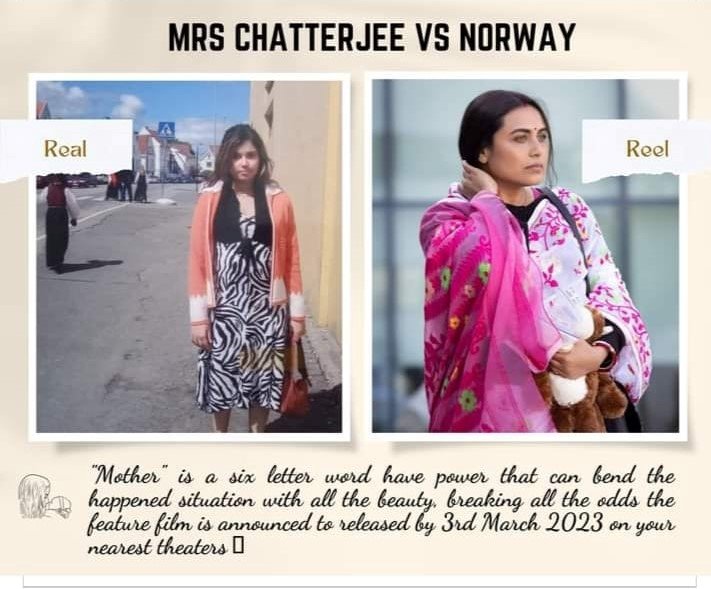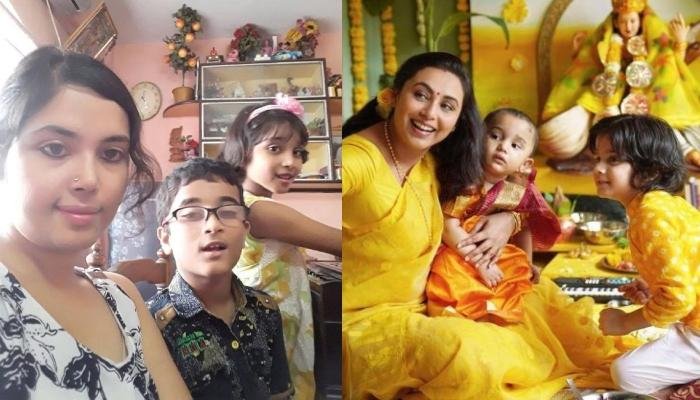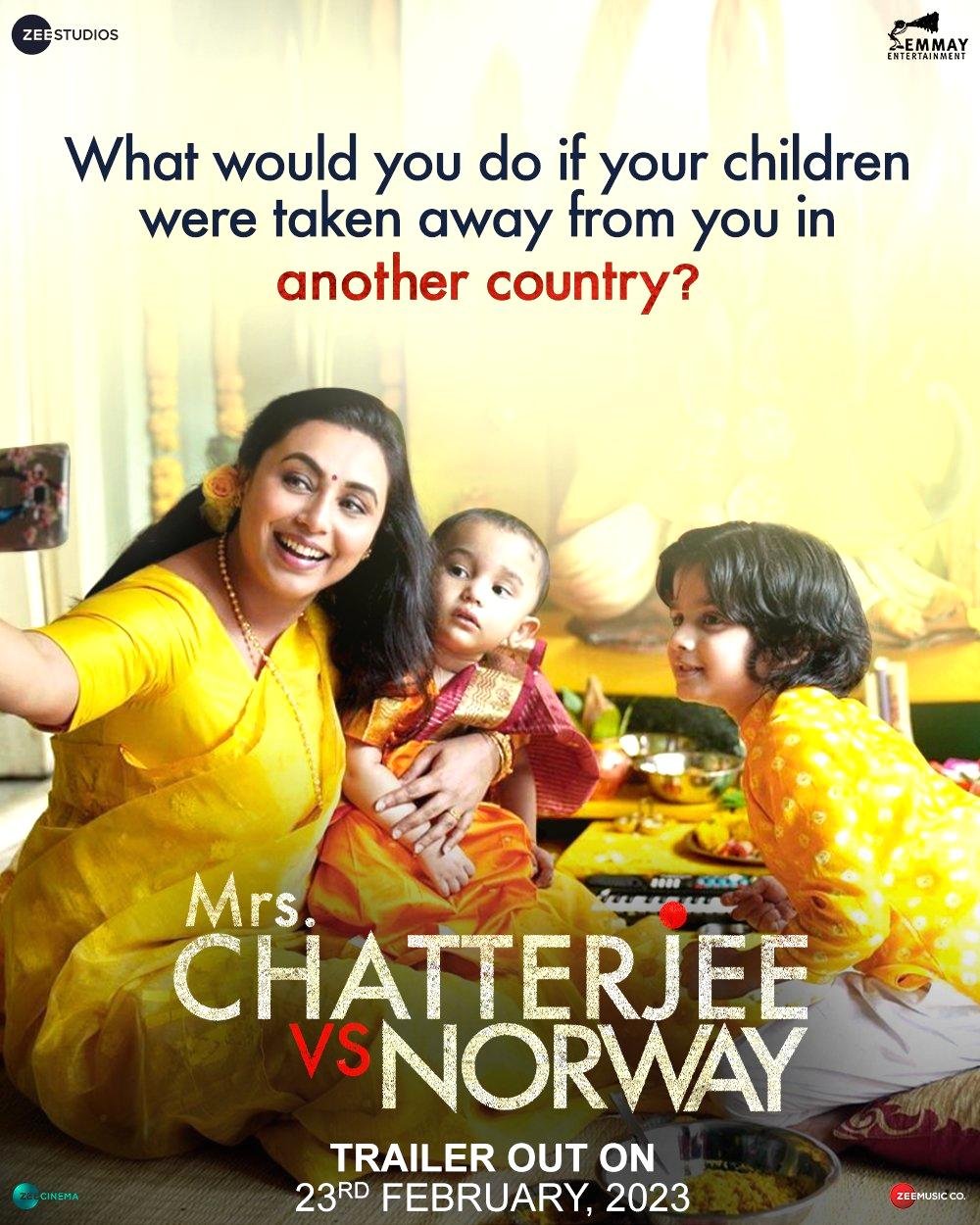Cast: Rani Mukherjee, Anirban Bhattacharya, Jim Sarbh
Director: Ashima Chibber
The movie, an adaptation of a real-life incident, retells the story of Sagarika Chakraborty, which hit the headlines a decade ago when she fought against the Norwegian authorities to win back the custody of her biological children who were taken away by the Norwegian Child Welfare Services.
Why does the movie stand out?
Brilliantly directed, this movie stands out for many reasons.
- First, the storyline itself is one of the most powerful elements of the film. Ashima Chibber and her team have done thorough research on the case. The depiction of the reel mother’s journey is aptly portrayed through the film, incorporating creative liberties as required. We understand that when a movie is made on a biopic or an actual event, one must be meticulous in dealing with the details.

- At the same time, if one wants to dig deeper for a better understanding of the case, reading the book penned by Sagarika would be a good option. The book The Journey of a Mother provides a complete and detailed account of the legal battle she had to fight. It may not be a literary piece but it’s definitely a gripping narrative with all related evidence/ legal notes/letters that gives the reader an insight into the complexities of the case. And was it only a legal battle that she had to fight? One would remain baffled and feel numbed to read about the ordeals the mother had to fight within. In fact, that was perhaps even worse, standing firm against an abusive husband, using her presence of mind to deal with her parents-in-law and a nincompoop brother-in-law (I would have preferred using the word lecherous for him).
- Coming back to the film, the script is tight and brilliantly edited. The songs, too, play a crucial role and cannot be skipped. They help the audience to comprehend the different phases of the life of the protagonists – either it’s a flashback of the bright sunny days when the young Bengali/Indian couple was gradually building up their shongsar, their own world and trying to find their foot in a foreign land or the songs that showcase the plight and fight of the mother over a tough period of time.
- The film’s supporting cast was well thought out and convincing; each one has done full justice to his/her role. Jim Sarbh and Balaji Gauri stood out for their impressive and effortless acting skills. Neena Gupta’s cameo was well-scripted and delivered.
- The male protagonist, Anirban Bhattacharya, known for his intense acting skills hasn’t disappointed his audience. The language (Hindi/English) has remained challenging for him (which he graciously acknowledges). But he is a staunch theatre actor and does his homework well. That is evident from how convincingly he played the husband’s role; so poltroon, confused and cowardly. The scene when he meets his son at the foster parent’s home and tries to talk to him realising he’s long forgotten by the little one is quite painful.

- And finally, yes, it would not be wrong to conclude that had it not been for the actor herself, the film probably would not have garnered accolades. Rani Mukherjee is the one (wo)man army here. The entire cast, crew and the unit have aptly supported her in rendering another brilliant performance on screen, emoting the frustration, anguish, and despair the protagonist goes through. She’s indeed a powerhouse of talent when it comes to acting and we have witnessed that before in her movies like Black, Hey Ram, Kabhie Alvida Na Kehna and others. She blended so well with the character that the two and a half hours will make you forget that she is the reel mom and not the real one. I would like to mention one scene in particular when the kids were being taken away by the guards after a short visit that was allowed to the parents, the grief-stricken mother, helplessly waved at the son, assuring her little one ‘Disneyland!’ (Referring to their previous conversation, as she pacifies the son saying that staying at the foster home would be their ticket to Disneyland) – it was heart-wrenching!
- Many may find Rani’s character to be high-pitched and exaggerated (in the first half), perhaps a bit insane in a way. However, I felt it to be quite normal – a mother in a foreign land, struggling to put across her pain in words (due to language challenges) to get back her children would be desperate. With almost no support from her own people (other than her parents, in India) if she even tends to lose her sanity in this nightmare, is she really to be blamed? Maybe the director wanted to tap into this aspect (the Chandi avatar/incarnation of Maa Durga).
- Ah, one more thing that catches the attention of the viewers and deserves a mention is the costume. Right from the beginning till the last frame, Rani Mukherjee’s sarees are not to be missed. The subtle, six yards Dhakai that she wore, of the different colours and shades, are the show stealers for sure.

- Lastly, as the movie ended, before the credits ran, as the pictures of Sagarika and her two little ones flashed on the screen, they gave you goosebumps. I did not hesitate to give a standing ovation at the theatre and I’m sure you would do the same – for her grit and determination!














